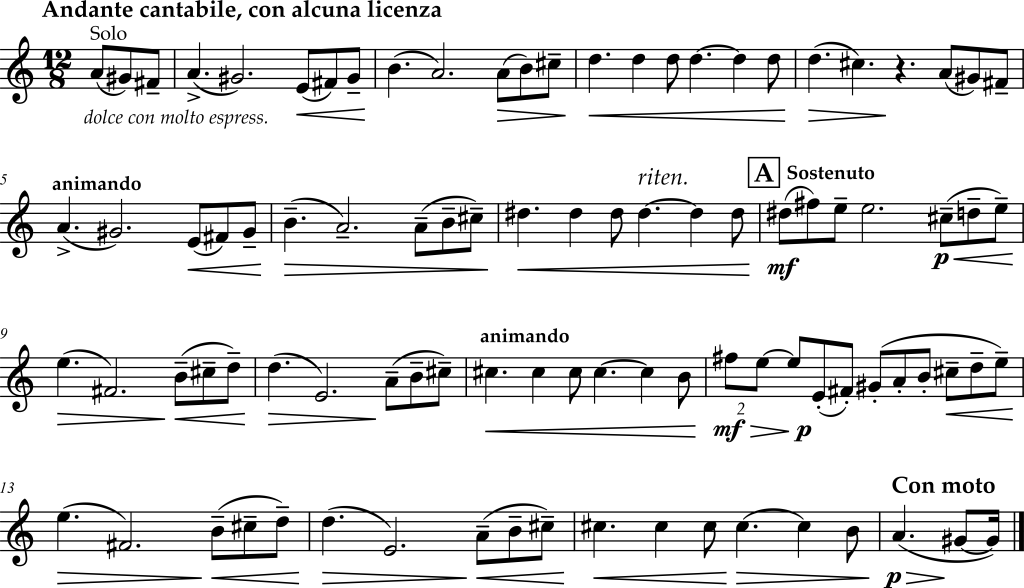B. Compound Triple Meter as 9/8 and Compound Quadruple Meter as 12/8
Exercises in 9/8 and 12/8
In this chapter, the dotted-quarter-note-beat measure expands from two beats (6/8) to three (9/8) and four (12/8) beats. The rhythmic complexity of Chapter 2A has been maintained in this chapter, so the challenge is now one of navigating and conducting longer measures.
Exercises in 9/8
Exercise 2B-1: Johann Sebastian Bach, Violin Concerto in A minor, BWV 1041, Movement 3
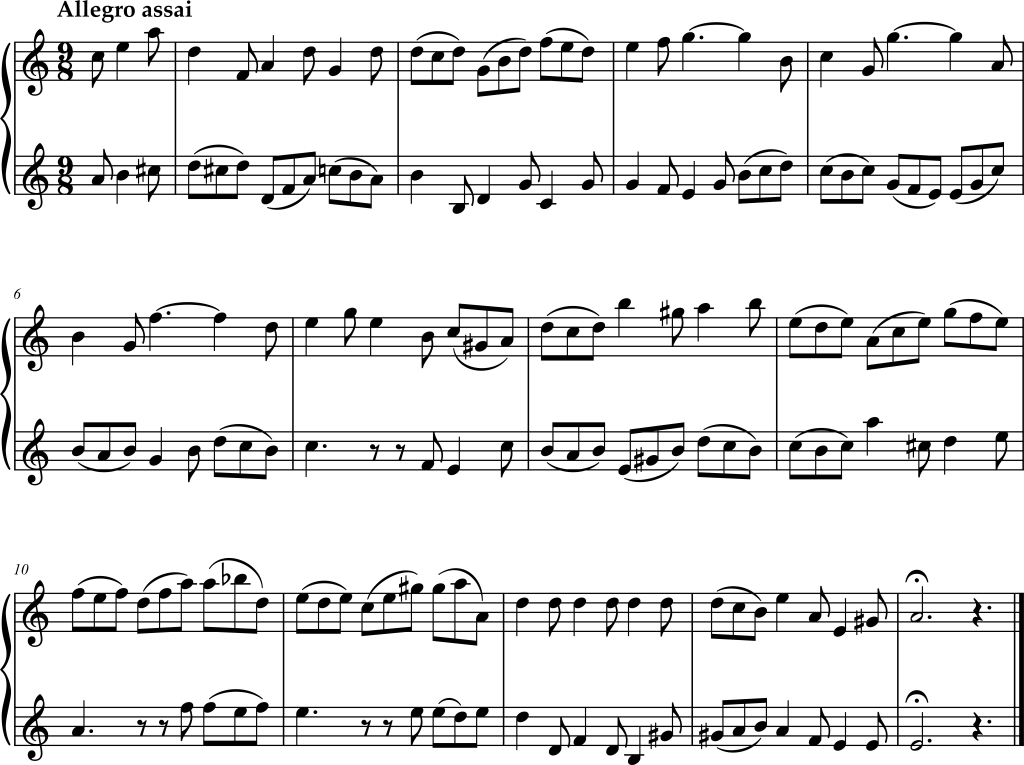
Exercise 2B-2: Amy Beach, Theme and Variations for Flute and String Quartet, Op. 80
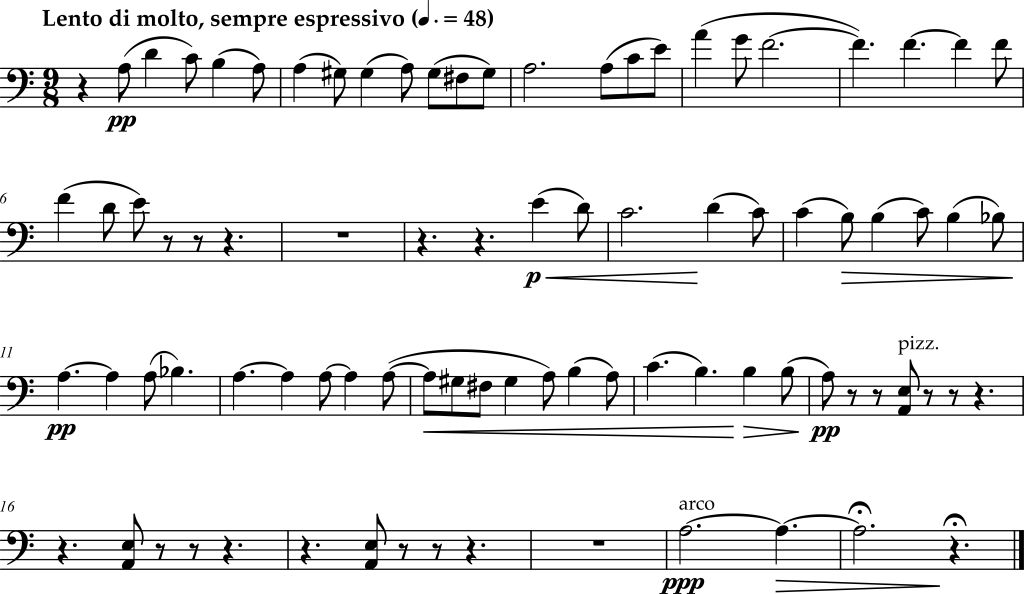
Exercise 2B-3: Carl Loewe, Nachtständchen
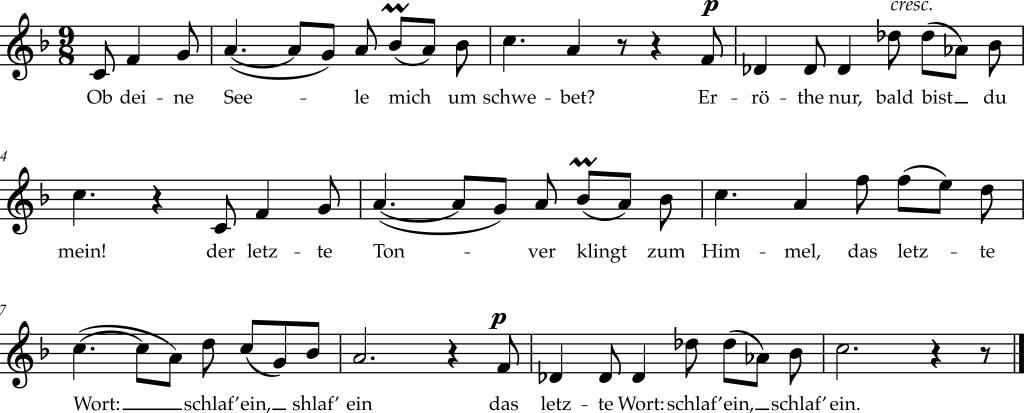
Exercise 2B-4: Amy Beach, Three Browning Songs, Op. 44, Number 3, “I Send My Heart up to Thee!”
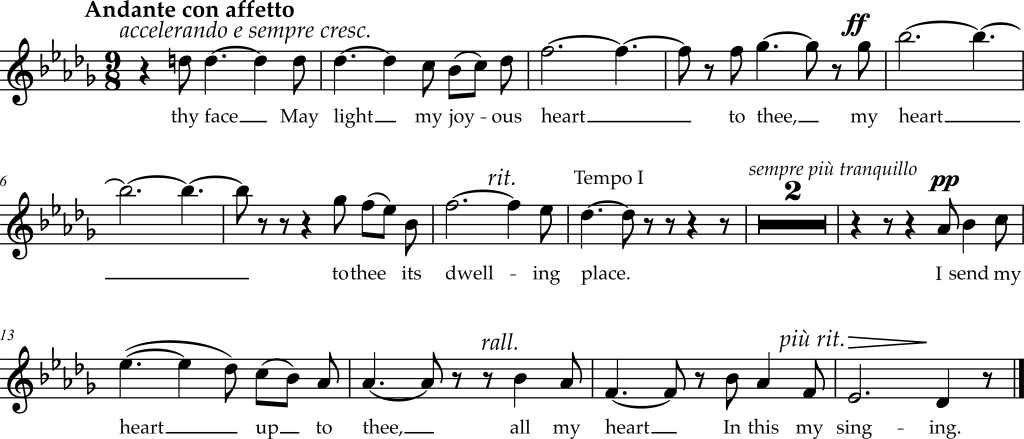
Exercises in 12/8
Exercise 2B-5: Josef Rheinberger, Horn Sonata, Op. 178, Movement 2
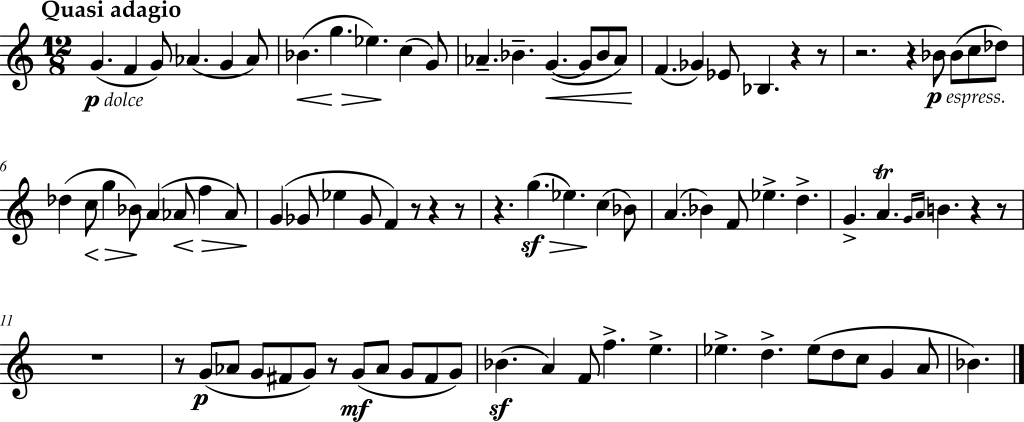
Exercise 2B-6: Edward Elgar, String Quartet in E minor, Op. 83, Movement 1
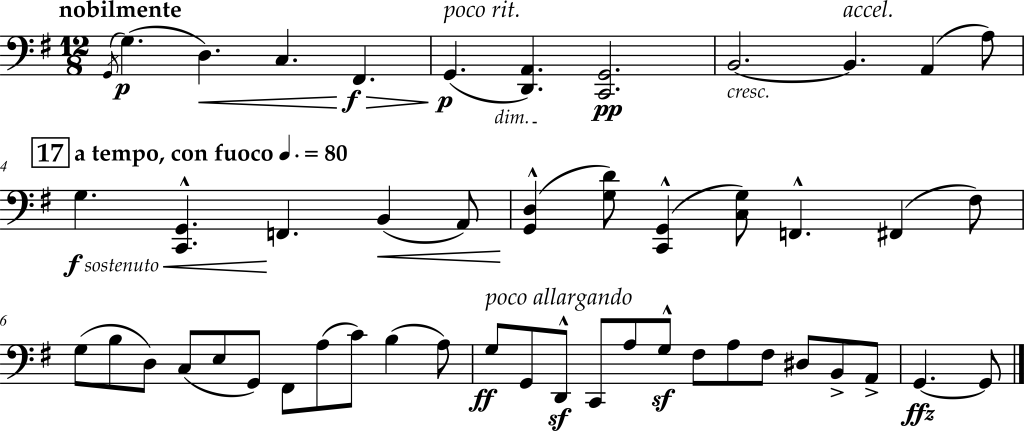
Exercise 2B-7: Charles Gounod, Six Melodies for Horn and Piano, CG 566, Number 1
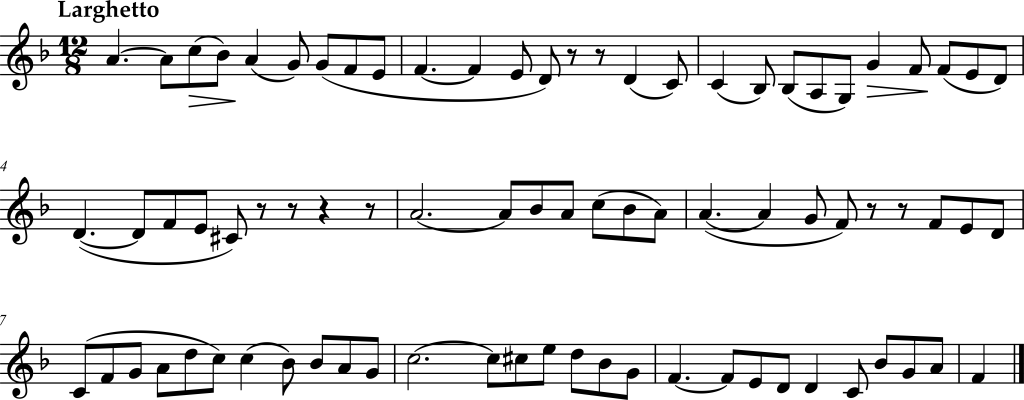
Exercise 2B-8 features a singular duple (i.e., simple-meter) division of the beat on the downbeat of measure 12. We will discuss moving between duple and triple beat divisions in Chapter 4, so for now, you can imagine a different rhythm for that beat, attempt it as-is by placing the second duplet exactly between the second and third eighth-note beat division of the bar, or listen to a few recordings and imitate what those performers do. Notice the second half of the tempo marking, which translates to “with some freedom.”
Exercise 2B-8: Pyotr Ilyich Tchaikovsky, Symphony Number 5 in E minor, Op. 64, Movement 2
